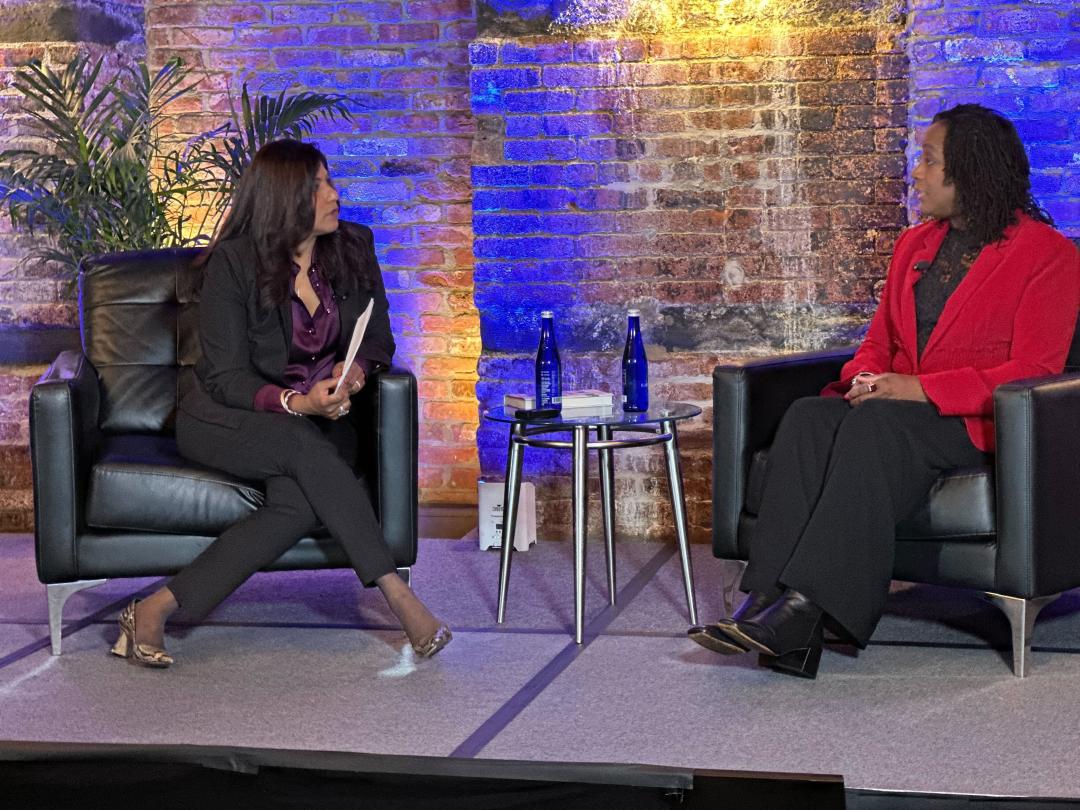On October 25 in New York City, the Zscaler CXO REvolutionaries team hosted its final CXO Summit Live event of the year in the intimate confines of The Beekman hotel. What was an invigorating morning, filled with reciprocal insights and actionable peer exchanges, was capped off by a call to action for the leaders present: create a climate within your organization where every individual can contribute to its success while feeling seen, heard, and valued.
I spent the next half hour speaking with a leadership expert, and all-around poignant thinker about how to make that happen.
Dr. Gena Cox, Ph.D., is an organizational psychologist, executive coach, speaker, and author who writes and advises on topics of executive leadership, diversity and inclusion, and the future of expectations in the workplace. She joined me in New York for a conversation on “The Ascendency of Inclusion.”

DEI is not an initiative. It’s a core competency.
Much of the advising Dr. Cox does leads to executives asking themselves the fundamental question, “What can we do to make sure that we are ready to deliver the future we desire?”
Ultimately, in attempting to answer this question, her clients’ attention turns to talent. C-suites and boards of directors see attracting, upskilling, and retaining human capital as critical to organizational success.
"Diversity, equity, and inclusion is a way of minimizing something that is just a core competency like marketing and sales for any business leader," Dr. Cox said. If talent is the means to reach an organization’s desired end state, it only makes sense to draw from the deepest talent pool possible. This is why DEI is not a “nice-to-have,” it’s essential to optimizing performance.
Our conversation unfolded amidst a backdrop of phenomena including “the Great Resignation,” “quiet quitting,” unionizing workforces, and an overall expectation of a different sort of employee experience than was once commonly accepted.
For Dr. Cox, this reflects shifting expectations of what it means to be in the workforce today. COVID-19 forced businesses to consider how to keep employees productive while remote, but workers came to their conclusions based on the experience.
"When I think about remote work and the calls to come back to the office, where often the conversation is about if we're physically together, we might innovate better, we might be more creative, we'll build stronger relationships and culture and so on. All of that is true," she said. "But for parents and caregivers and so on, what they were saying is we want something a little bit different so we can make sure we can work wherever we work, but that we still have mobility, career progression, and that we don't become invisible."
In the tech field, we tended to see remote work as a technical challenge. Companies like Zscaler led the charge in assembling the nuts and bolts of secure remote work solutions. But Dr. Cox reminded us that, for employees, remote work is now part of a much broader conversation.
An MBA in inclusivity
As a part of her research, Dr. Cox talked with scores of executives who reported common issues they saw as hindering their progress in creating more inclusive cultures. These included:
- A sense of it being someone else’s responsibility
- Viewing it as a hot-button, lose-lose initiative
- A lack of clarity about optimal outcomes for the intended beneficiaries
These self-reported stumbling blocks came as no surprise to the employees—black women especially—who Dr. Cox surveyed next. They knew that leadership was intimidated about tackling inclusivity, wanted to avoid talking about it, and didn’t know what underrepresented groups ultimately wanted.
This, Dr. Cox suspects, is why black women regularly report the lowest levels of employee satisfaction over the years she has conducted her research. Their needs are too often seen as peripheral to leadership’s goals, too dangerous to address, and largely misunderstood.
For inclusivity efforts to have legs within an organization, they should follow an “MBA” approach, according to Dr. Cox:
- Mindset – A point of view that drives a vision. In this case, a diversity of perspectives and lived experiences will positively impact the overall organization.
- Boldness – The willingness to do the difficult things to achieve that vision and to hold others accountable for doing so as well. There is an expectation that executives, department heads, and individual contributors will align with the mindset.
- Action – Doing the specific things that will deliver meaningful outcomes. Because “inclusion tops diversity,” hiring quotas and ad-hoc training aren’t sufficient for building an inclusive culture.
REDI for a change? Start with what you measure.
In exploring what employees with low satisfaction scores are missing, it comes down to the ability to feel seen, heard, and valued. In a word: respect.
“This means access to opportunity and career mobility. It means being paid fairly and equitably relative to other people in the organization. It means getting access to high-visibility jobs,” said Dr. Cox.
To get there, she advises prioritizing the day-to-day experiences of all employees rather than measuring the diversity of new hires or the number of DEI activities the organization conducts. Parse that data to understand and address variability between groups. Like any corporate initiative, prioritize inclusion at the highest levels, but allow for tactical discretion in how that plays out at the department and team levels.
And if at first you don’t succeed, iterate, said Dr. Cox. Full-throated inclusivity efforts may be young, but they are essential.
As she succinctly put it when our time together drew to a close, “Does effective leadership mean effectively dealing with people who don’t look like you? Well, then every manager needs to know how to do that.”
What to read next
Representation matters: How to attract, recruit and retain cybersecurity women
Challenging generations-old beliefs key to advancing women in technology

